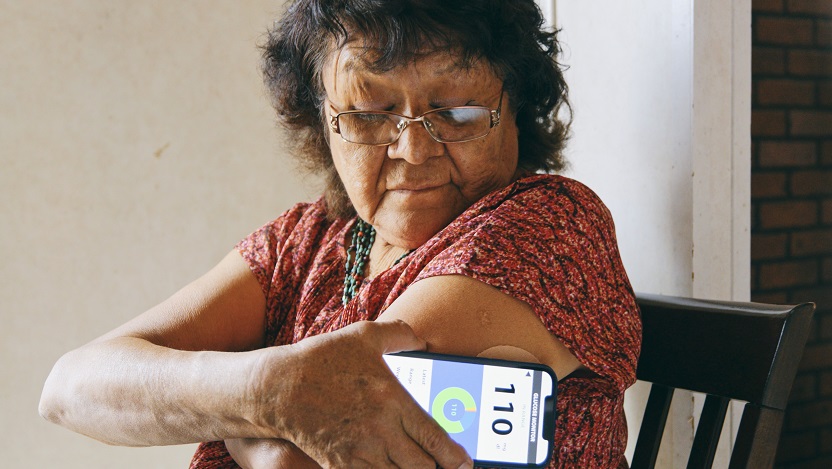Diabetes affects nearly 38.4 million people in the United States, or 11.6% of the population.
And its prevalence increases with age. According to the Centers for Disease Control and Prevention, nearly 1 in 3 people over the age of 65 have diabetes.
Diabetes is characterized by consistently high levels of glucose (sugar) in the blood. Diabetes has no cure, but it can be managed with exercise, a healthy diet, weight loss, monitoring, and medication, says Dr. Ahmid Dreder, a primary care physician at Chicago Medicine Medical Group*.
“With the right medical care, it can be an illness that doesn't have to be life-changing or overwhelming,” says Dr. Dreder, who practices at the University of California Chicago Medicine Kenwood.
Chicago Medicine Kenwood's primary care physicians, including Dreder, focus on meeting the unique needs of patients age 55 and older. A social worker may also be involved to perform a fall risk assessment and review prescription plans for patients taking five or more medications to assist with medication management.
Dreder discussed the signs and symptoms of diabetes, simple lifestyle modifications, and the unique challenges this disease poses to older adults.
What is diabetes?
When we eat, most of our food is broken down into glucose, which our bodies use for growth and energy. The hormone insulin moves glucose from the bloodstream to individual cells, giving each cell the energy it needs to function.
Diabetes is a condition that occurs when blood sugar levels become too high because the pancreas does not produce enough insulin or does not produce it at all.
What types of diabetes are there?
There are different types of diabetes, including type 1, type 2, and gestational (diabetes during pregnancy). The majority of people with diabetes (90-95%) have type 2 diabetes.
- In type 1 diabetes, the pancreas does not produce insulin. It can develop at any age and requires medication (insulin) to treat. Two million Americans have type 1 diabetes, including 304,000 children and teens.
- In type 2 diabetes, your body becomes resistant to insulin. It is usually diagnosed in adults over the age of 45, but is increasingly being diagnosed in younger people. Causes include obesity, lack of physical activity, diet, hormonal imbalances, family history, and certain medications.
What challenges do older adults face in managing diabetes?
Diabetic complications can be more severe in older people, Dreder said. This can lead to an increased risk of cardiovascular disease, kidney disease, neurological disorders, and visual impairment.
“It's important to have annual eye exams and diabetic foot exams to make sure your diabetes hasn't progressed to the point where it affects other organs and tissues,” Dreder says.
What are the warning signs of diabetes, especially in older adults?
- Malaise
- Increased thirst and hunger
- unintentional weight loss
- urinate frequently
- blurred vision
- Skin infections or cuts and bruises that heal slowly
Some people may not realize they have diabetes because symptoms begin slowly and often go unnoticed.
“Older adults may dismiss these symptoms as just part of aging, but they can be a sign of a deeper problem,” Dreder says. “If you notice any changes, please consult your doctor.”
What lifestyle habits support diabetes management in older adults?
Many people with type 2 diabetes can manage their blood sugar levels through diet and exercise. Some low-impact, easy-to-do exercises include:
- walking
- swimming
- cycling
- dancing
- yoga
- resistance band training
Eat foods rich in vitamins, minerals, antioxidants, and fiber.
- whole grain
- dark leafy vegetables
- nuts
- beans and lentils
- Fish rich in omega-3 fatty acids, such as salmon
- broccoli
- berries and citrus fruits
How often should older adults see a health care professional for diabetes treatment?
People with diabetes usually see their doctor every 3 to 6 months. Close follow-up may be required if blood sugar levels are not controlled or if side effects occur.
Some patients may require tablets or insulin injections. Doctors and diabetes educators can help you understand diabetes and provide support. In some cases, you may be referred to a diabetes specialist known as an endocrinologist.
“Every patient has an individualized treatment plan,” Dreder said, who can provide referrals to geriatricians (physicians specifically trained in the unique health needs of older adults) for patients who need it. That's what it means. “Always consult your doctor about your care and symptoms.”
The University of Chicago Medicine Kobler Diabetes Center offers a patient-centered, science-based approach to managing insulin-dependent type 1 diabetes and complex type 2 diabetes.
How can older adults with diabetes measure and track their health?
Some people with diabetes need to monitor their blood sugar levels daily. If you manage your diabetes without insulin, you may not need to check your blood sugar levels as often.
Ask your doctor what your blood sugar target should be. Regular monitoring can help control blood sugar levels and prevent serious damage to the eyes, kidneys, and nerves.
*Dr. Dreder is a physician with Chicago Medicine Medical Group. UChicago Medicine Medical Group is comprised of UCM Care Network Medical Group, Inc. and Primary Healthcare Associates, SC. UChicago Medicine Medical Group providers are not employees or agents of the University of Chicago Medical Center, the University of Chicago, the University of Chicago Ingalls Memorial Hospital, or the University of Chicago Medical Center. Chicago Medicine Kenwood.


